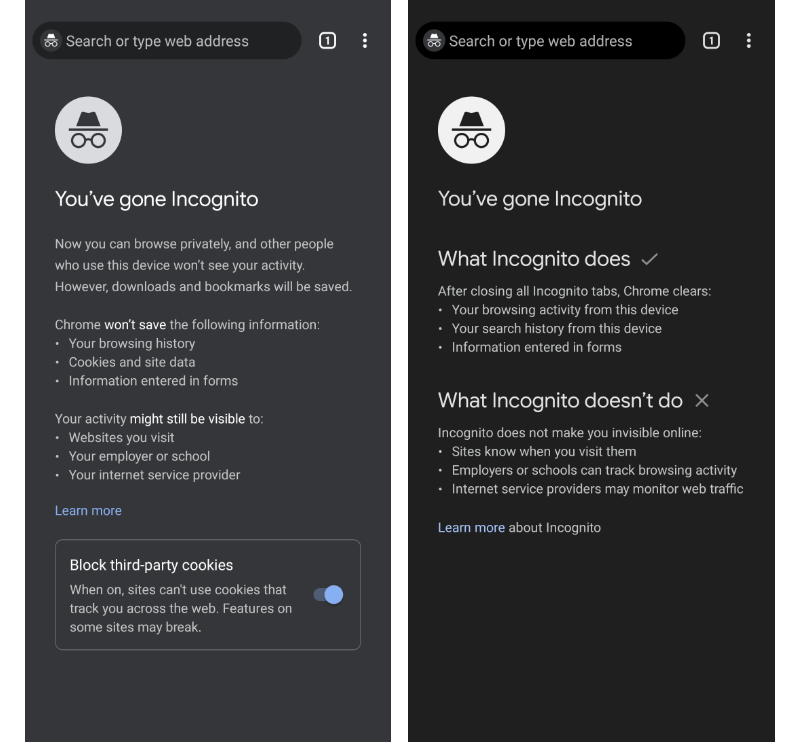
Google Chrome has that 'Incognito' mode that allows users to browse "privately." But many people don't really understand what "private" means in this browsing mode.
Incognito mode is a "private browsing" mode, popular method among users who are trying to browse the web discreetly. This is allowed because the Incognito mode does not store browsing information.
What this means, Chrome won't save any history or anything that is typed into forms.
But it does allow tracking, meaning that users are not invisible. Google knows what users are doing while in Incognito, and so does websites they visit, as Incognito mode doesn't hide IP address or other data.
Following a $5 billion lawsuit over the Chrome's Incognito mode tracking complaints that began in 2020, Google is making a bit of a change to how its data collection methods work in Incognito.
The change aims to make Chrome's Incognito more transparent to users, so users won't be left in the dark about what Chrome can and cannot do while the mode is activated.
In the update, Google rewrites the home page of Incognito.
What Incognito does
After closing all Incognito tabs, Chrome clears:
- Your browsing activity from this device.
- Your search history from this device.
- Information entered in forms.
What Incognito doesn’t do
Incognito does not make you invisible online:
- Sites know when you visit them.
- Employers or schools can track browsing activity.
- Internet service provides may monitor web traffic.

The redesigned start page for Incognito mode clearly separates these two into easy-to-understand bulleted lists.
While the styling of the page looks practically identical, this one change is an improvement for anyone looking to use the feature.
The change in the verbiage is to eliminate the confusion about what Incognito does and does not do.
The option to block third-party cookies is also removed from the bottom of the page, as Google has begun implementing its FLoC initiative.
While the freshly-worded version of Incognito describes what the private browsing mode does and does not do more clearly, it still does not explicitly state that Google continues to gather data from incognito browsing, which is a pivotal element of the lawsuit.
The updated information is spotted on the Canary build of Google Chrome, meaning that the final message may differ.
Further reading: 'Private Browsing' Mode, And Why You Should And Shouldn't Use It